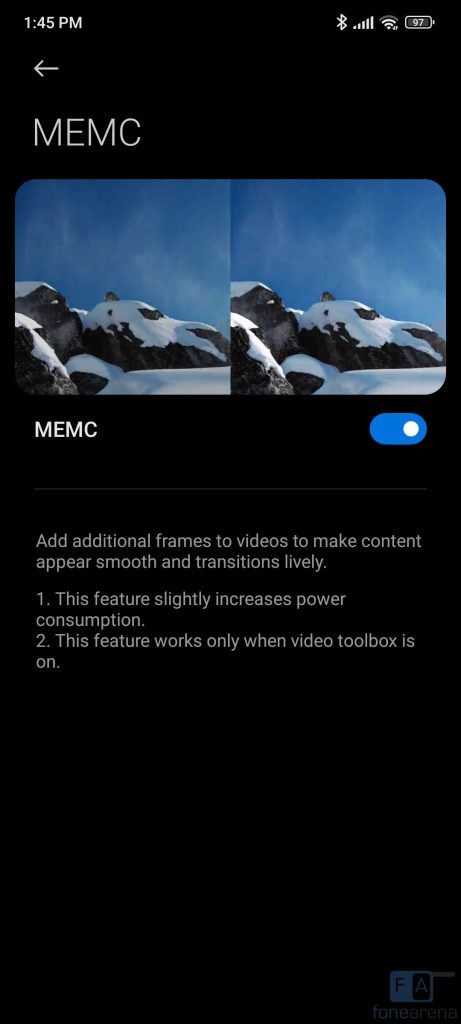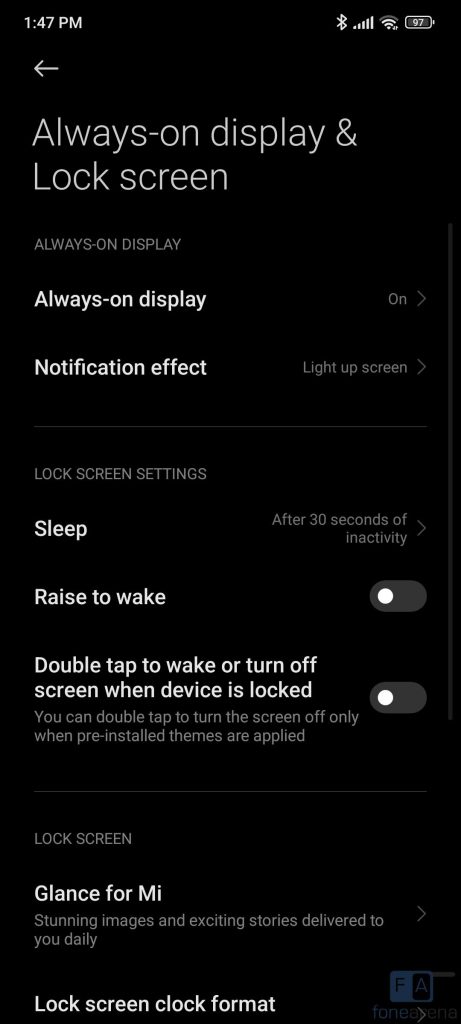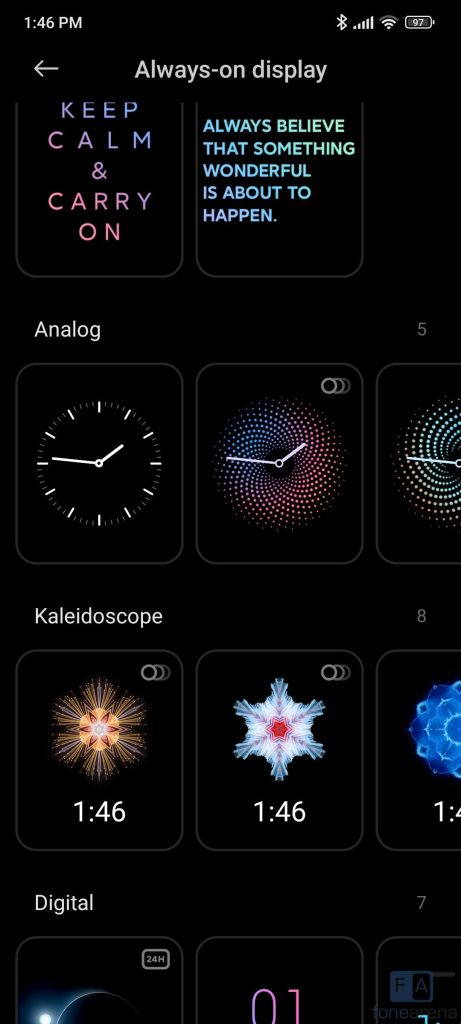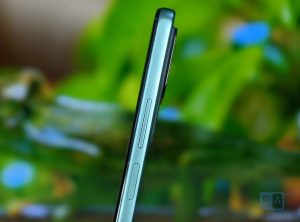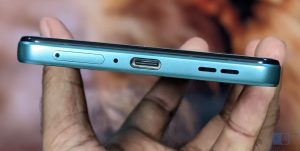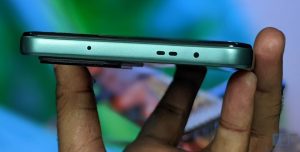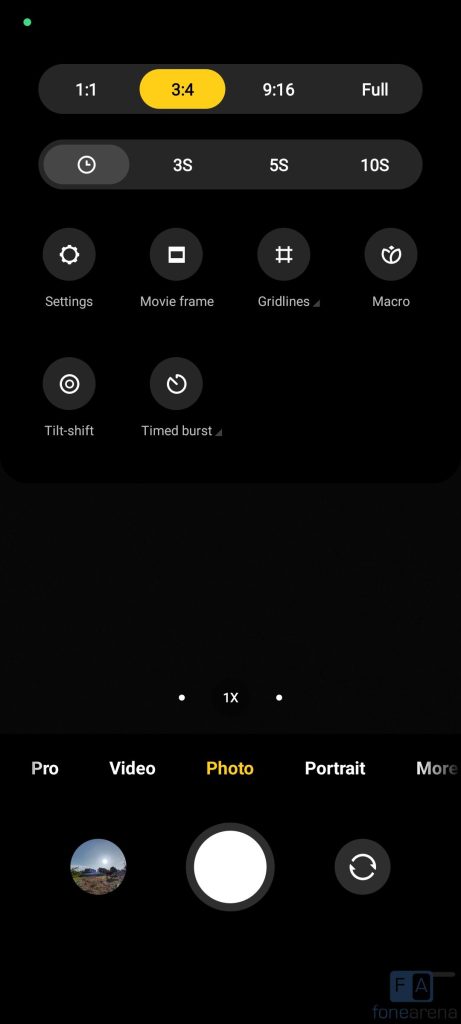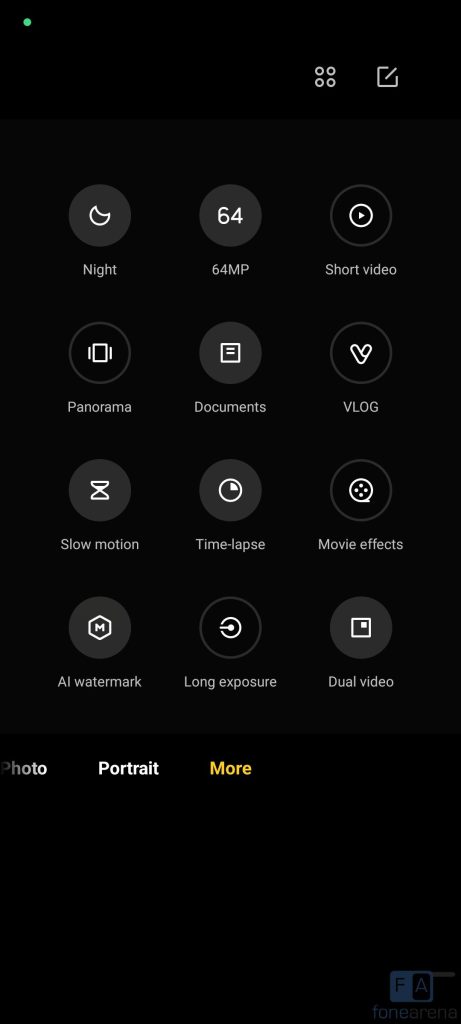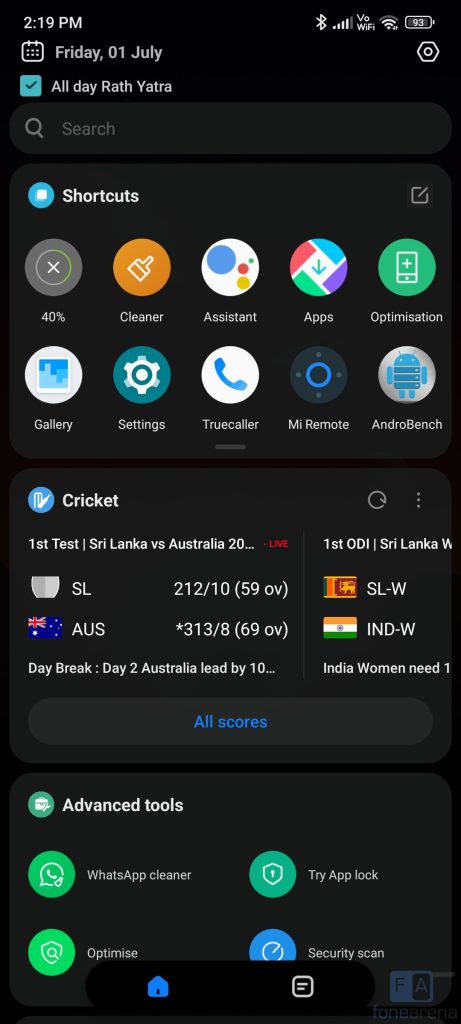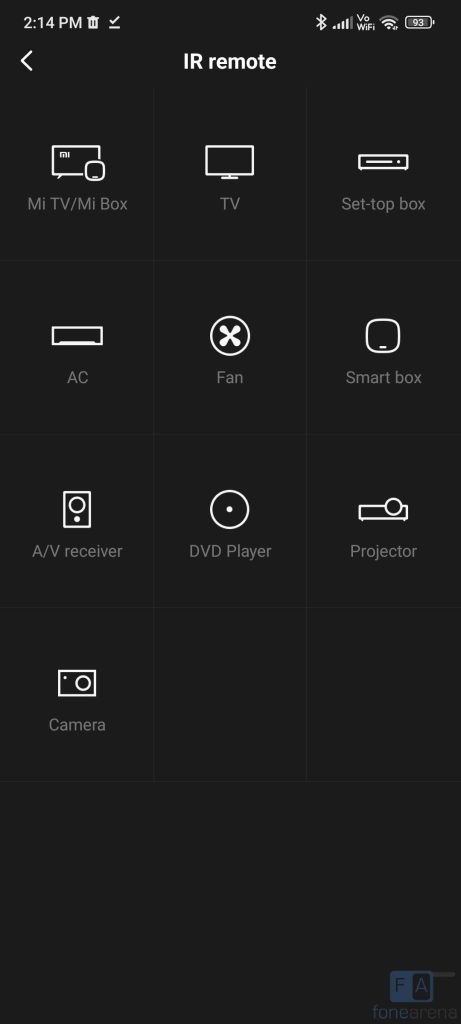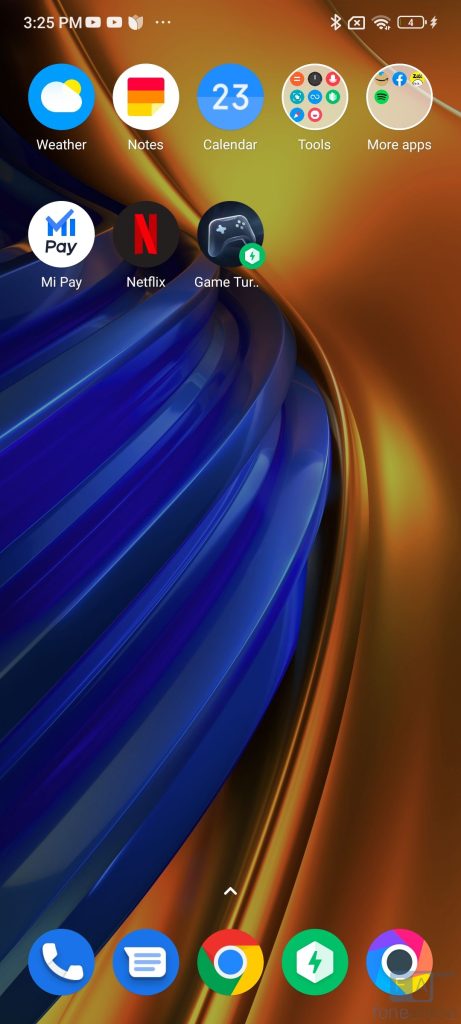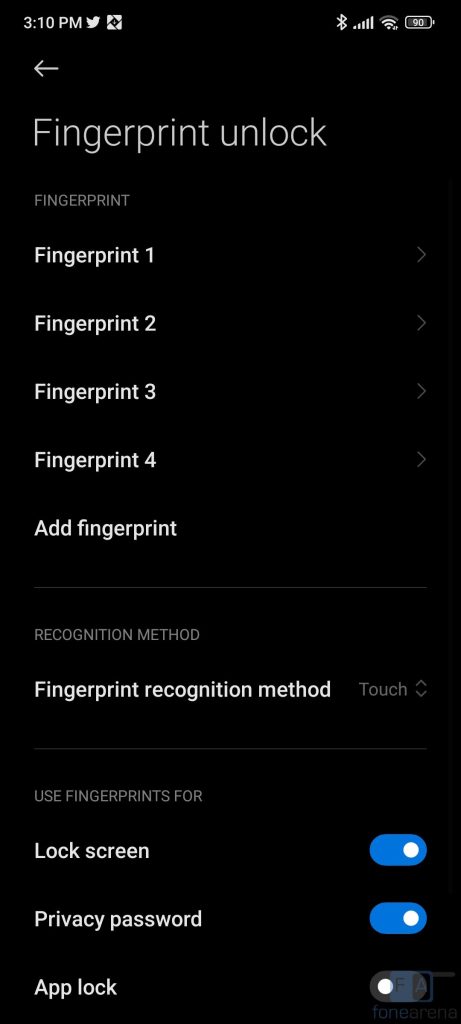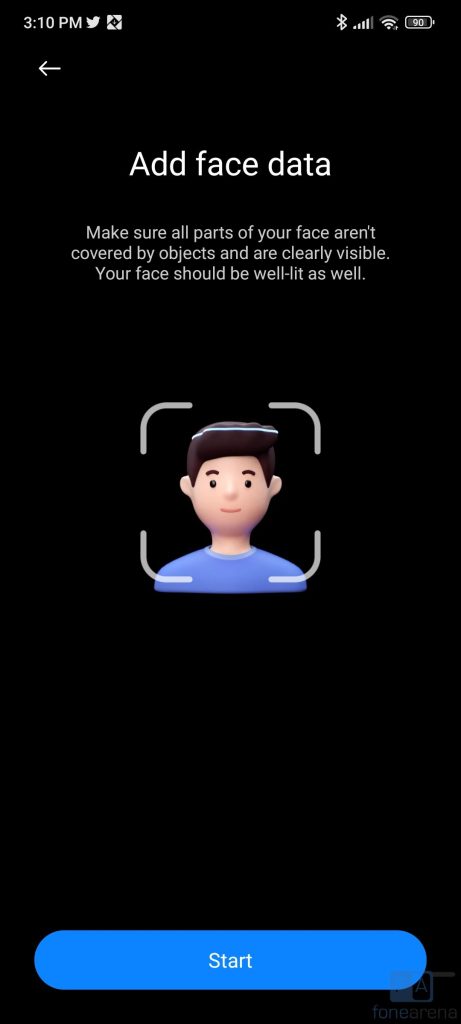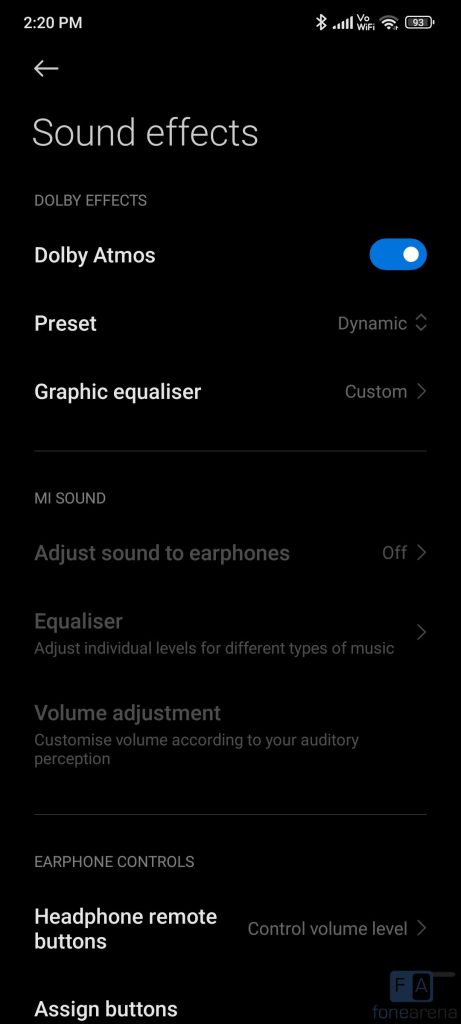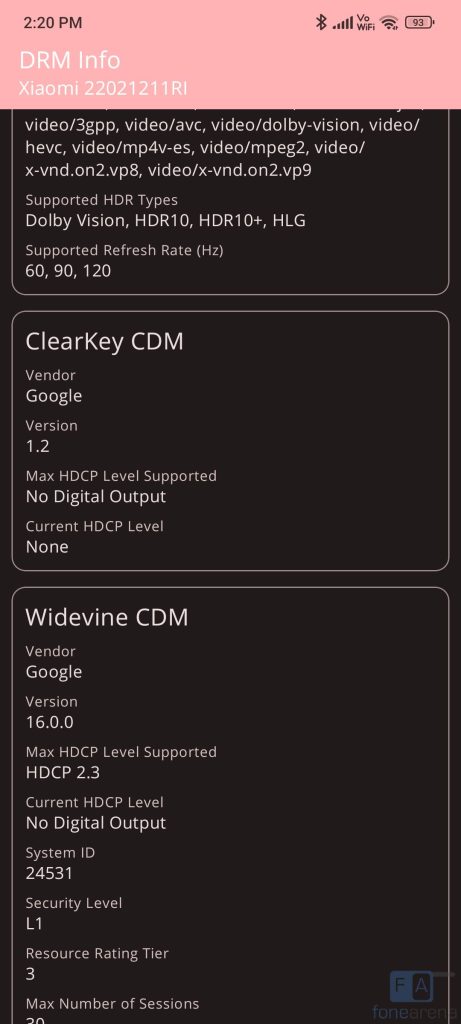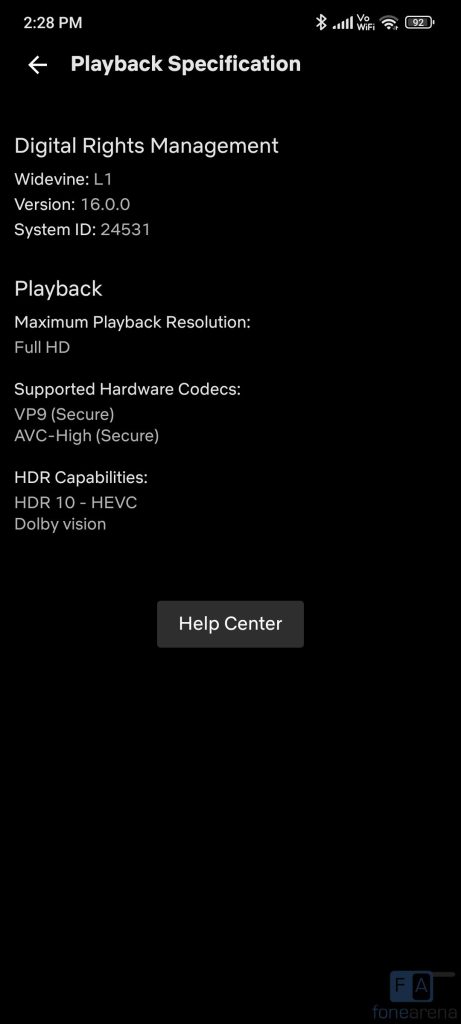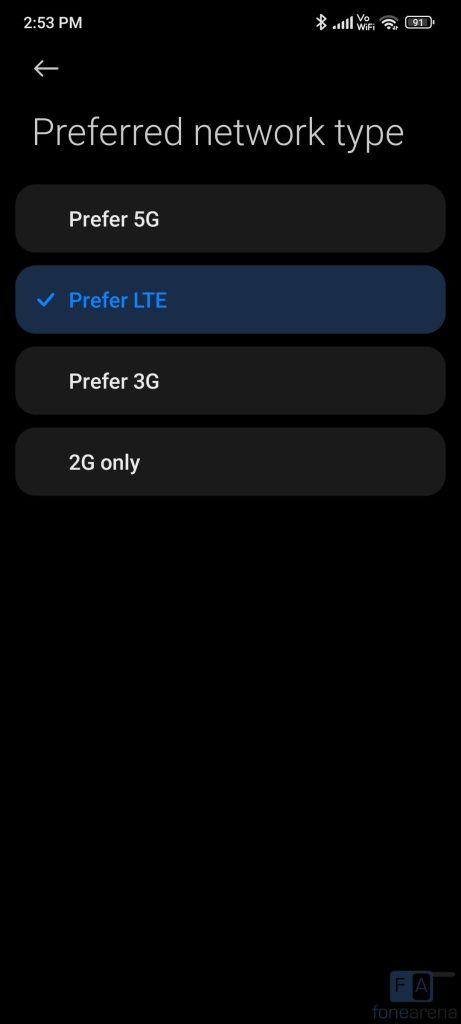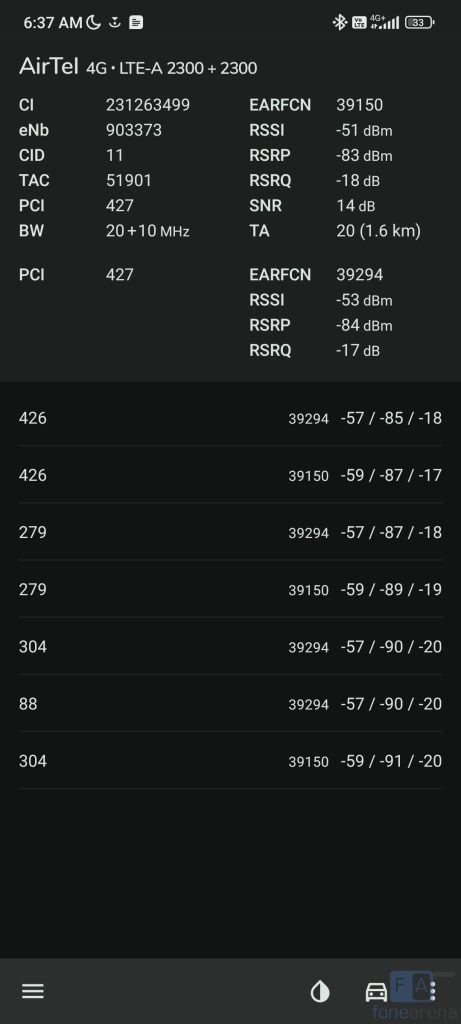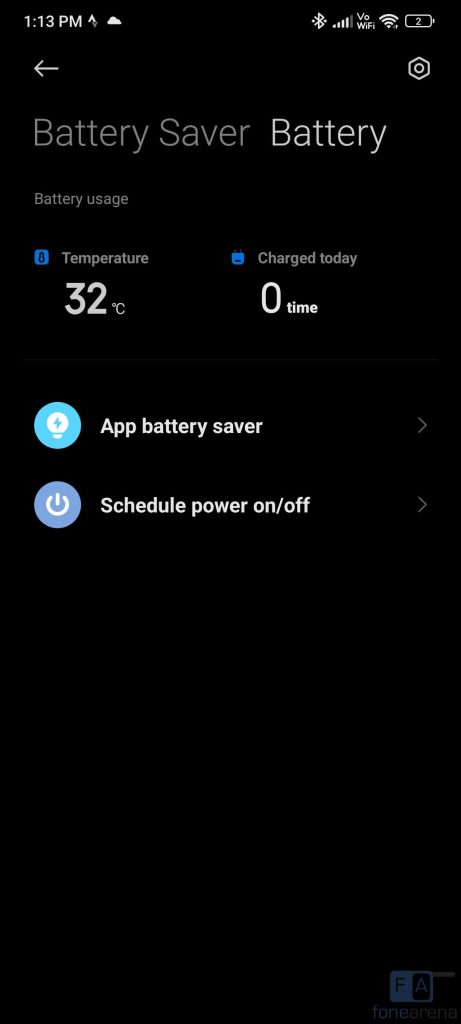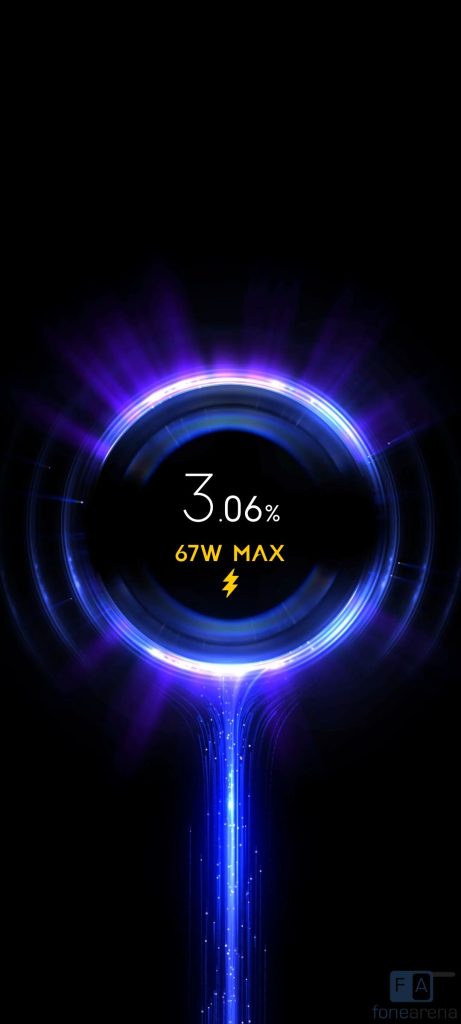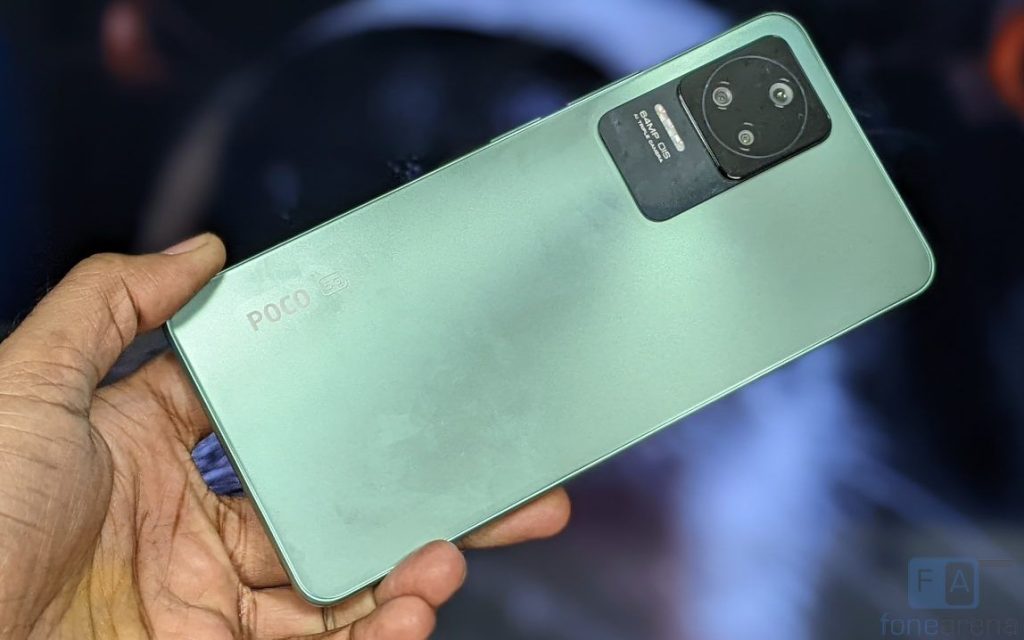
POCO launched the most expected POCO F4 5G smartphone in India last week. The POCO F1 that was launched back in 2018 turned out as a value for money phone at that time, and it is still used by several fans. There was no POCO F2, and the POCO F3 was not launched in India last year. The POCO F4 has impressive specs including a FHD+ 120Hz AMOLED display with Dolby Vision, Snapdragon 870 SoC, 64MP camera with OIS and 67W fast charging. Is the phone worth the price? Let us dive into the review to find out.
Box Contents
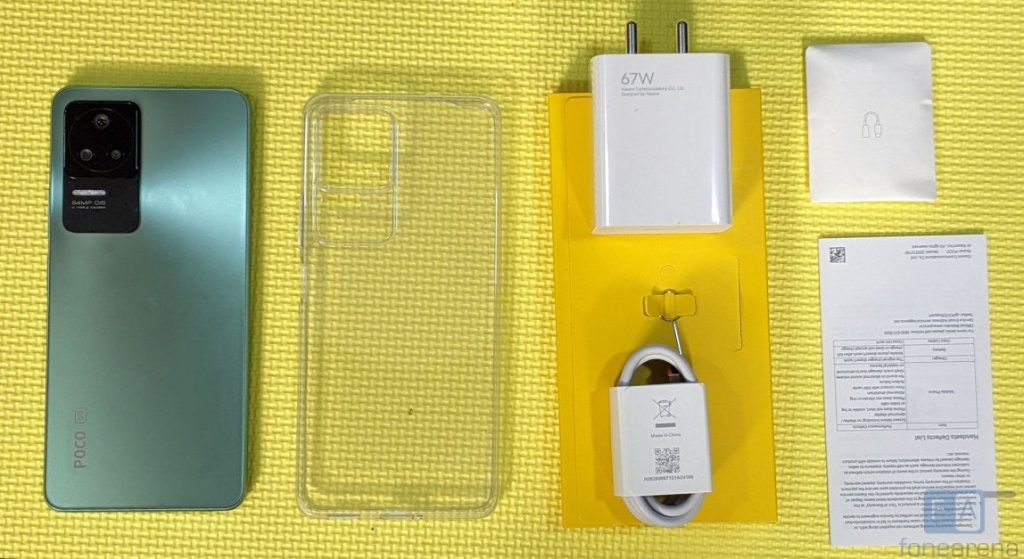
- POCO F4 5G 12GB + 256GB in Nebula Green colour
- 67W fast charger
- USB Type-C Cable
- SIM Ejector tool
- Clear protective case
- Screen protector (Pre-installed)
- USB Type-C to 3.5mm converter
- User guide
Display, Hardware and Design
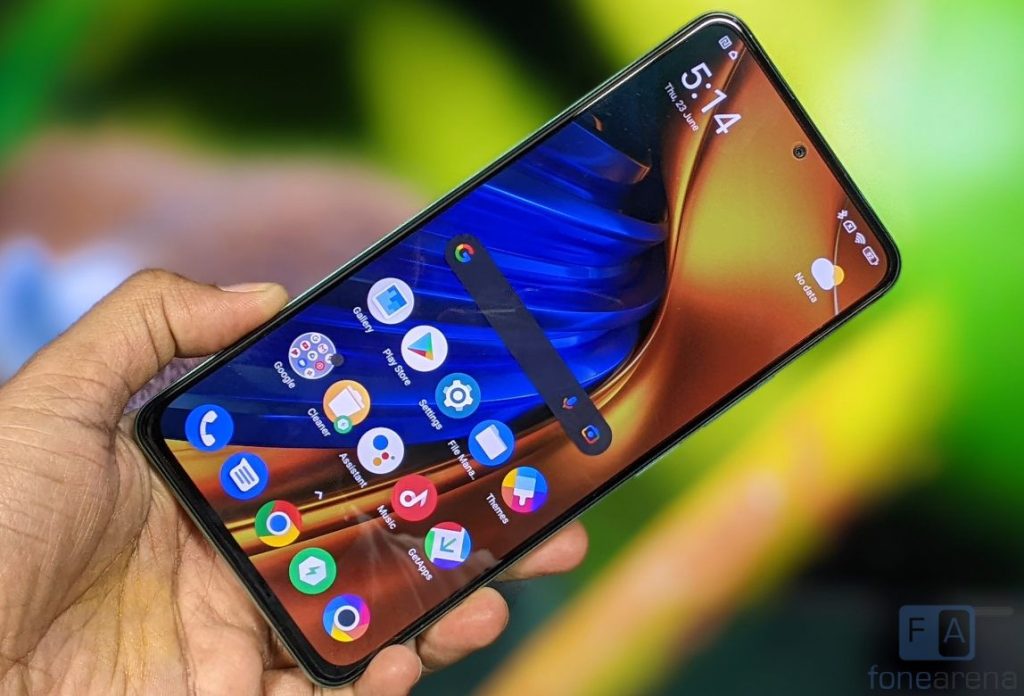
Starting with the display, the POCO F4 has a 6.67-inch Full HD+ AMOLED display with a pixel resolution of 2400 x 1080 pixels, 20:9 aspect ratio and a pixel density of about 395 PPI. The display is bright, thanks to 900 nits (typical), 1300 nits peak brightness, which is enabled when you are watching HDR content. It has 100% DCI-P3 Color Gamut, so the colours are vibrant.
The phone has a 120Hz refresh rate display can switch between 30Hz, 60Hz and 120Hz according to the content. It has 360Hz touch sampling rate. When enabled, it offers a buttery smooth user experience, especially when you are scrolling through the UI and when gaming. It also has HDR 10+ support, which works for YouTube and Amazon Prime Video and there is Dolby Vision which works for Netflix.
Under the display options, there are different options to adjust colours and contrast based on your preference. There is also a reading mode that lets you reduce the display’s blue light emission, so it doesn’t cause eye strain when you are reading at night, but this will be disabled when you play HDR videos. There is Dark mode, similar to other MIUI phones. You also get an option to enable dark mode to apps that are installed, but it doesn’t look good on most apps. It also has AI HDR enhancement for videos and MEMC for smooth video playback. There is no DC Dimming option. The phone comes with Corning Gorilla Glass 5 protection.
The phone has an always-on-display option, which can be enabled from display settings. This doesn’t consume a lot of power since this is an AMOLED screen, but the company says that it increases the power consumption, so it turns off automatically when the phone stays dark for a long time or battery saver restrictions are applied. It also has super wallpaper or live wallpaper feature.
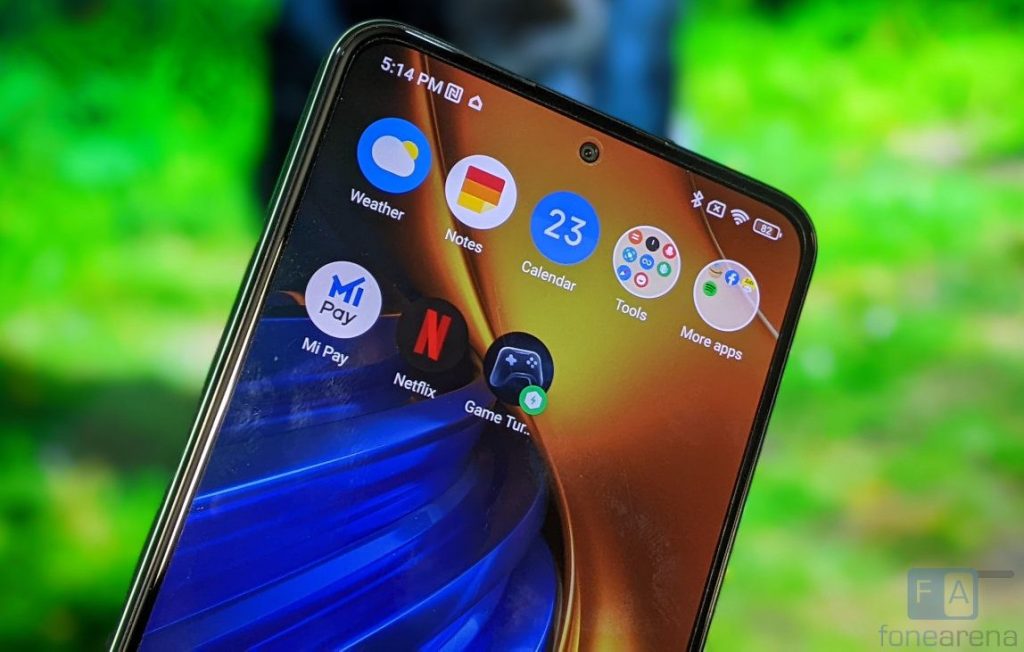
The phone has a tiny 2.67mm punch-hole that houses a 20-megapixel camera, which doesn’t disturb when watching videos since it just occupies a small space. Above the display there is an earpiece on the top edge which also doubles up as a secondary speaker. The phone also has the usual set of proximity and ambient light sensors, as well as a gyroscope and a magnetic sensor, otherwise known as a magnetometer.
Coming to the button placements, the volume rockers and the power button that integrates the fingerprint sensor are present on the right side of the phone. There are also some gesture features in the power button that lets you double tap to perform actions or take a screenshot. The dual SIM slot, loudspeaker grill, primary microphone and USB Type-C port are present on the bottom. It doesn’t have a microSD expansion slot. On the top there is a vent for speaker, secondary microphone and an infrared sensor.

The back of the phone also has a glass finish which offers a smooth matte finish. In addition to the Nebula Green colour that we have, the phone also comes in Night Black colour. The phone is just 7.7mm thick, and weighs 195 grams since it has a huge screen, and a glass back even though it packs a 4500mAh battery. The phone has IP53 ratings for splash resistance, so it has mange slight spills or light rain, but you can’t immerse in water.
Camera
- 64MP rear camera with Omnivision OV64B sensor, f/1.79 aperture, OIS
- 8MP OmniVision OV8856 sensor, 119° ultra-wide angle lens with f/2.2 aperture
- 2MP GalaxyCore GC02M1 macro camera with f/2.4 aperture
- 20MP front-facing camera with Sony IMX596 sensor, 0.8μm pixel size, f/2.4 aperture
The camera UI is familiar with other Xiaomi or POCO smartphones running MIUI 12. You get all the features such as Pro, Night, 64MP, Short Video, Panorama,, VLOG, Slow motion, Time-lapse, Dual video, AI watermark, Long exposure and Pro mode lets you adjust white balance, focus, shutter speed (1/4000s to 30 seconds), ISO (50 to 6400) and option to select main, ultra-wide and macro lens. You can also shoot in RAW in Pro mode and enable focus peaking, exposure verification and more options. POCO has enabled Cam2API by default, so you can side-load ported Google Camera APKs for advanced editing, including RAW capture.
Coming to the image quality, daylight shots came out well with good dynamic range. After pixel binning technology, you get 16MP output from all main camera. HDR shots are better with improved dynamic range. 8MP wide-angle shots are decent, and and the 2MP macro camera is just average, so it is better to shoot close up images in 2X. The 20MP front camera is good, and you get full 20MP output. Lowlight camera performance is good from the main camera, but the ultra-wide lowlight shots are just average.
Check out the camera samples.
It can record videos at 4k resolution at 60 fps, and it also has slow motion 1080p at up to 120 fps and 720p resolution video recording at up to 240 fps. There is also 960fps option, which should be converted. You can also shoot 1080 30 fps videos using the ultra-wide and 720p with macro camera. OIS in the main camera does its job, and there is a separate ultra-steady mode that uses both OIS and EIS, but it switches to 1080p.
Software, UI and Apps
It runs Android 12 out of the box, with MIUI 13 on top. It recently got June 2022 Android security patch recently. POCO did not say how many updates the phone will get, but we can expect at least 2 Android OS updates. MIUI 13 lets you uninstall several system apps. This has all the usual set of features such as Gesture shortcut, one-handed mode, Quick Ball and more. It has POCO launcher 2.2 on top, and the company said that the phone will get POCO launcher 4.0 update with several features soon.
Since the phone has an infrared sensor for remote function, it comes with Mi Remote that lets you control your home appliances easily. Out of 12GB LPDDR5 RAM, you get 11.33GB of usable RAM, and about 5GB of RAM is free when default apps are running in the background. It also has up to 3GB of memory extension or virtual RAM, which you can disable from additional settings. Out of 256GB, you get about 224GB of free storage. It has UFS 3.1 storage, and we got sequential read speeds of 1588.5MB/s.
Apart from the usual set of utility apps, Google apps and POCO’s own set of apps, it comes preloaded with Netflix, Amazon, Facebook, Zili and Spotify apps. It also asks for additional app installation during setup, which you can skip. You can easily uninstall these apps, but these come up when you reset the phone. Even though there is personalized ads option during set up and recommendations in all the apps, you don’t get any ads in apps.
Fingerprint sensor and Face unlock
Even though the phone has an AMOLED screen, it has a side-mounted fingerprint sensor that quickly unlocks the phone. You can add up to 5 fingerprints. You can also use the fingerprint for app local and payments in apps. The phone also has face unlock, but it is not as secure as fingerprint since it can be unlocked with a photo.
Music Player and Multimedia
The Mi Music Player is the default music player with usual POCO audio effects and equalizer. It also doesn’t have FM Radio, but comes with Dolby Atmos, and the phone has has stereo speakers that offer an excellent audio experience, and Audio through earphones is good as well.
It has Widevine L1 support, so you can play HD content on Netflix, Amazon Prime Video and other streaming apps without any issues. The phone also supports Dolby Vision for Netflix and HDR10+ for Amazon Prime Video.
Dual SIM and Connectivity
It supports 5G, and has support for N1, N3, N5, N8, N28A, N38, N40, N41, N77 and N78 5G bands in India. It has 4G VoLTE for Reliance Jio, Airtel and other networks and support Dual 4G VoLTE that offers 4G in both the SIM cards at a time. The phone supports carrier aggregation as well. Other connectivity options include Dual-Band Wi-Fi 802.11 ax. It has VoWiFi / Wi-Fi calling support, Bluetooth 5.2 LE, GPS, Glonass, Beidou and NFC. It also has USB OTG support that lets you connect USB drives. Call quality is good, and we did not face any call drops and the earpiece volume was loud.
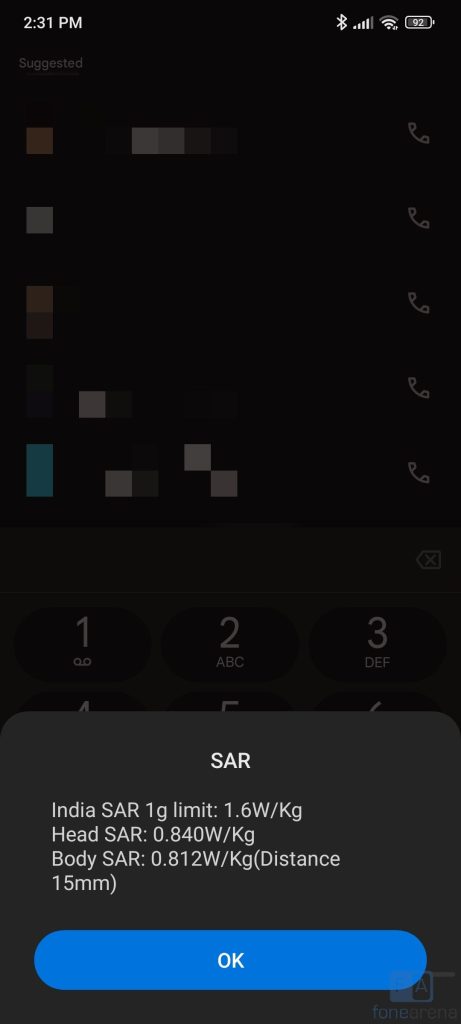
The POCO F4’s body SAR is 0.812W/Kg (Distance 15mm) and head SAR is at 0.840/Kg, which is well under the limit of 1.6 W/kg (over 1 g) in India.
Performance and Benchmarks
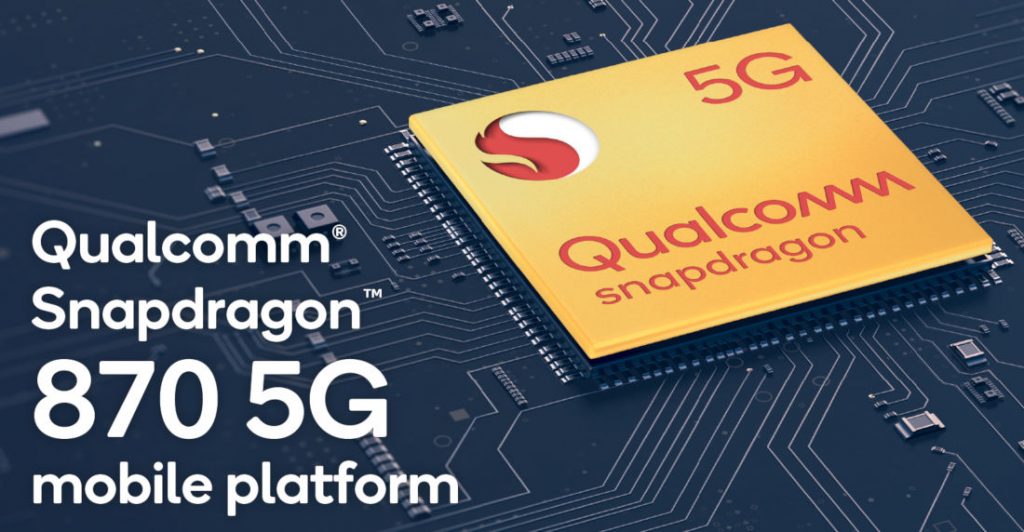
This is powered by Snapdragon 870 6nm Mobile Platform that uses Qualcomm Kryo 585 CPUs. It has 1 x Kryo 585 Prime CPU (A77-based) at up to 3.2GHz, 3 x Kryo 585 Performance CPUs (A77-based) at up to 2.42GHz, 4x Kryo 585 Efficiency CPUs (A55-based) at up to 1.80GHz
The Adreno 650 GPU offers a smooth gaming performance even in graphic intensive games, and the phone doesn’t get too hot even during long hours of gaming, thanks to vapor chamber area as high as 3112mm², and the liquid-cooled heat dissipation area that is over 400% better than the POCO F3, which greatly improves the heat dissipation efficiency.
The phone gets a bit warm on intensive gaming, but it doesn’t too hot. We did not face any issues or frame drops in the graphic-intensive games like COD, BGMI and Genshin Impact. It reached maximum 42º in our testing indoors in Wi-Fi, but this might vary outdoors in 4G. That said, check out some synthetic benchmark scores below.
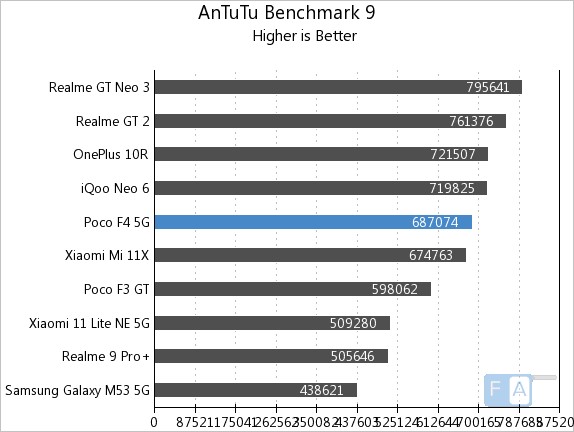
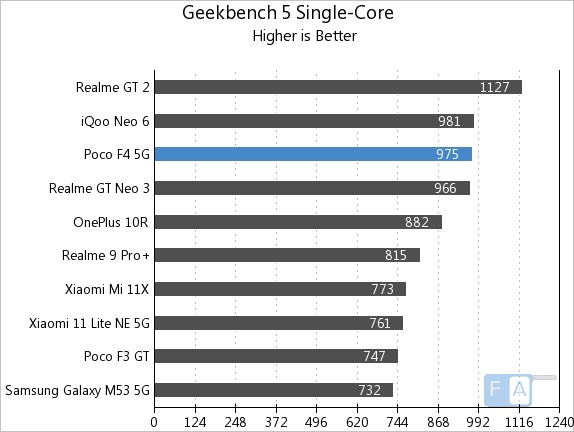
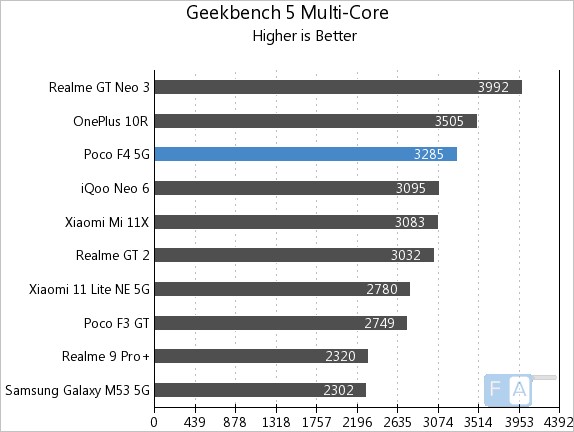
As you can see in the benchmarks, the POCO F4 powered by the Snapdragon 870 chip outperforms several phones and is almost similar to the iQOO Neo 6, but the Snapdragon 888 and the latest Dimensity 8100 are better.
Battery life
Coming to the battery life, the phone packs a 4500mAh (typical) built-in battery which might looks small, but it lasts for a day even with heavy use on 4G. With minimal use on Wi-Fi, it should last for 2 days. I got close to 4 and half hours of screen on time with over a day of use on Wi-Fi and in 120Hz.
Since the phone has support for 67W fast charging, it can charge from 0 to 50% in about 13 minutes and up to 100% in about 38 minutes.
Conclusion
At a starting price of Rs. 27,999, the POCO F4 5G is a value-for-money phone for multimedia and gaming. The rear camera is good in daylight and also has OIS, the phone has HDR screen with support for Dolby Atmos, and the phone doesn’t miss out any other features such as NFC, Dolby Atmos and more. After a long time, the the value king from POCO is back!
Alternatives
The iQOO Neo 6 is a good alternative, if you prefer the FuntouchOS instead of MIUI since these share similar specifications.
Pricing and availability
The POCO F4 5G is priced at Rs. 27,999 for the 6GB + 128GB, Rs. 29,999 for the 8GB + 128GB model and the 12GB + 256GB model costs Rs. 33,999. POCO also offers 2 years of warranty for the phone. The company also offers 2 months of free YouTube premium. In addition, it offers Rs. 3000 off with SBI Debit and Credit cards and EMI. It is available from Flipkart.
Pros
- 120Hz AMOLED display with HDR10+, Dolby Vision is brilliant
- Smooth performance and good gaming performance
- Stereo speakers, Dolby Atmos
- Good battery life with 67W fast charging
- Good camera with OIS
- IP53 water-resistant
Cons
- 2MP macro camera is average





